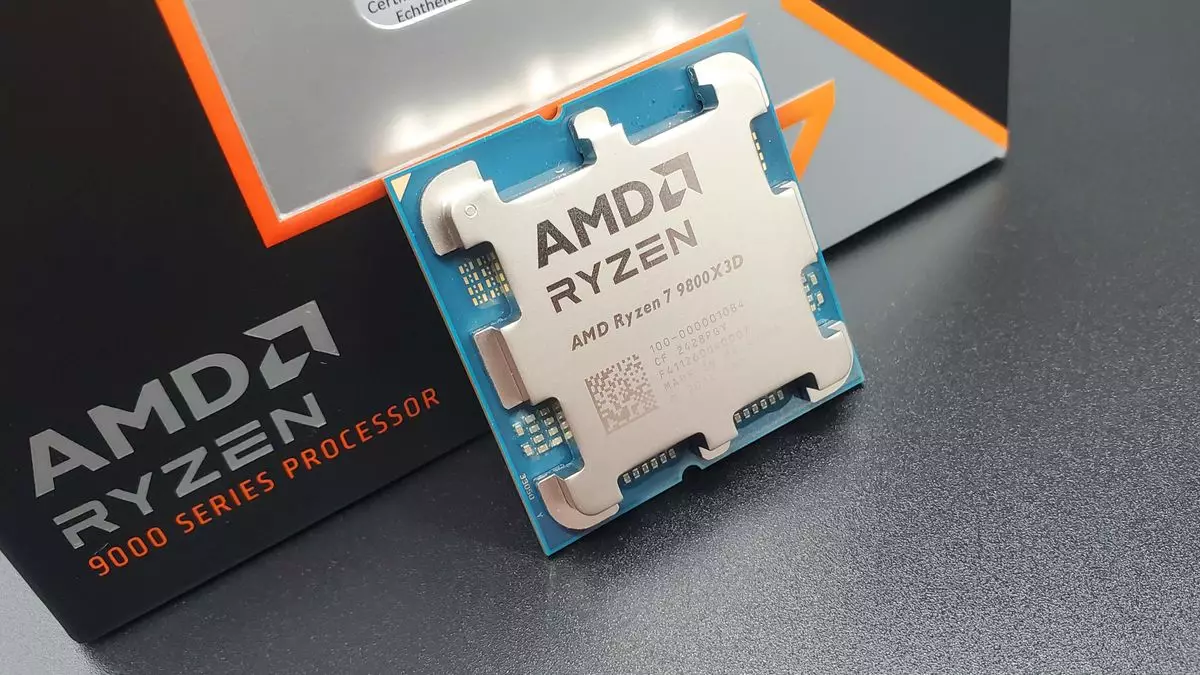In the world of computing, the battle between AMD and Intel has reached new heights, especially with recent developments in their CPU offerings. As both companies unveil their latest products, the focus has primarily been on graphics cards, overshadowing the significant advancements in CPU technology. This article aims to dissect the latest trends, challenges, and future potential of AMD’s and Intel’s CPU line-ups.
The recent introduction of AMD’s 9000-series ‘Zen 5’ processors has sent ripples through the market. AMD CEO Dr. Lisa Su declared these CPUs as a tremendous success during a recent earnings call. The company reported its highest sell-out figures in recent memory as holiday demand surged, reflecting a renewed consumer interest in gaming upgrades. The Ryzen 7 9800X3D, considered one of the top gaming CPUs available, has been notably difficult to find at reasonable prices since its launch, which aligns perfectly with AMD’s claims of strong sales.
However, it is crucial to understand that sales statistics can sometimes paint a misleading picture. Stock shortages can arise from various factors, including supply chain issues, rather than just overwhelming consumer demand. This context becomes particularly relevant when considering Nvidia’s recent GPU launches, which have faced accusations of being more about publicity than availability. Nevertheless, AMD’s latest offerings do seem to be captivating the market, as high demand indicates a promising trajectory for their CPU division.
While AMD celebrates its achievements, a broader analysis reveals that these successes may not be solely attributed to the strength of their new products. The competitive landscape plays a pivotal role as well. Intel’s Core Ultra 200S ‘Arrow Lake’ lineup has not made a significant impact, failing to deliver innovative enhancements that excite consumers. Critically, many Intel CPUs from previous generations have suffered from reliability issues that further taint their perception.
The atmosphere has thus become favorable for AMD. The historical performance of Ryzen CPUs—especially the 9800X3D—has solidified AMD’s reputation, positioning them advantageously against a backdrop of Intel’s troubles. Given the lackluster competition from Intel, it would be surprising if AMD’s CPU division did not perform symbiotically, driven by both development quality and competitive dynamics.
As the discussion shifts to mobile computing, the landscape again illustrates a tightly contested battle. AMD’s latest AI 300 ‘Strix Point’ processors are carving a niche not just in traditional laptops but also in handheld gaming devices like the OneXPlayer OneXFly F1 Pro. On the other side, Intel’s Core Ultra 200V ‘Lunar Lake’ processors aim to capture the mobile market as well.
Yet, while Intel may have a foothold in efficiency and mobile application, the gaming prowess of AMD’s Strix Point chips seems to take precedence. Performance metrics suggest that for gaming-intensive activities, Strix Point has the advantage. This illustrates not only the divergent paths the two companies are navigating but also highlights a market dynamic where efficiency may not always equate to performance.
As we look toward the future, AMD’s confidence in its products appears well-founded, but market fluctuations warrant caution. Seasonality is expected to impact performance in the upcoming quarters, and while AMD maintains a robust position in the desktop segment, there is no guarantee that their momentum will continue unabated. Notably, Dr. Su pointed out the expectation of a seasonal downturn, making it clear that while things are favorable now, potential headwinds lie ahead.
Moreover, the anticipated launch of AMD’s RX 9070 and RX 9070 XT graphics cards may influence CPU sales as well. The interlinked nature of these products means that while the CPU market flourishes, a shift in the GPU realm could introduce new variables, potentially altering consumer preferences and purchasing patterns.
The current state of AMD and Intel’s CPU markets showcases a thrilling yet unpredictable landscape. AMD enjoys a competitive edge, fueled by both innovative products and the failings of its closest rival. As both companies navigate their forthcoming product launches and consumer demand fluctuations, the next few months hold significant implications for the future of CPU technology. Enthusiasts and everyday users alike are left watching closely, as this rivalry continues to shape the technological horizon.
In the end, both consumer needs and corporate strategies will dictate who comes out as the victor in this high-stakes game. As they follow developments, users hope for ample stock levels so they can take full advantage of the remarkable advancements in CPU technology.

